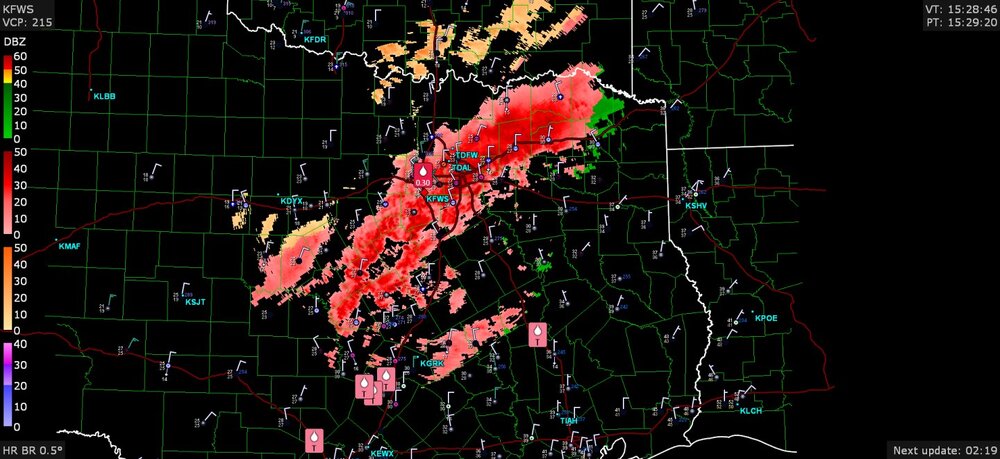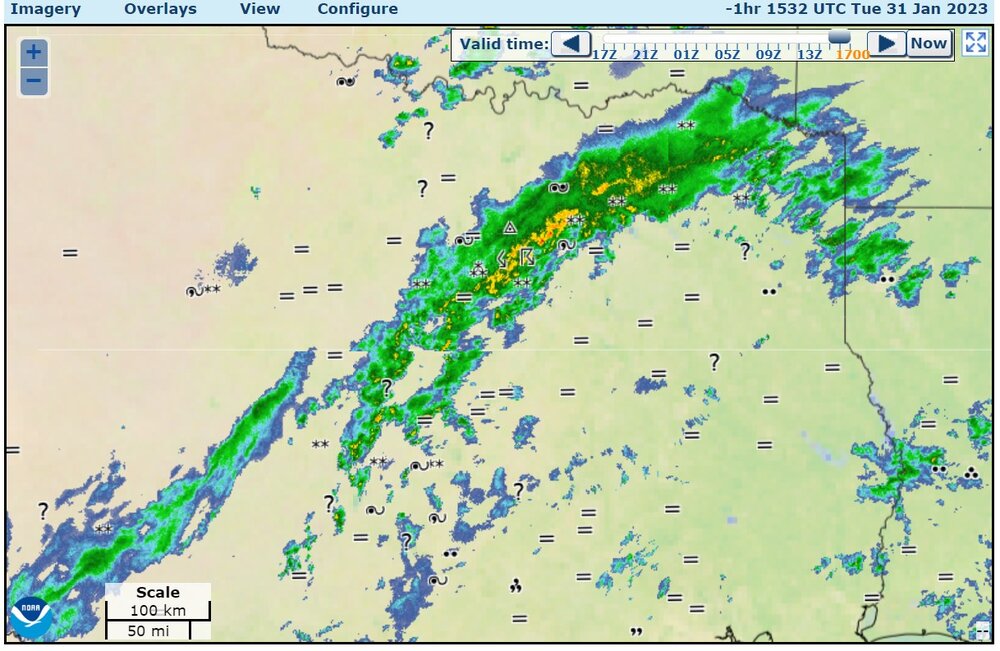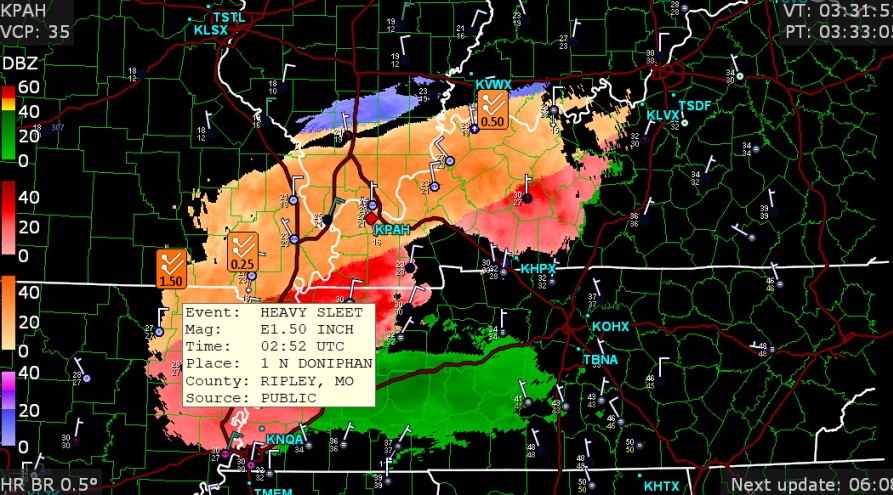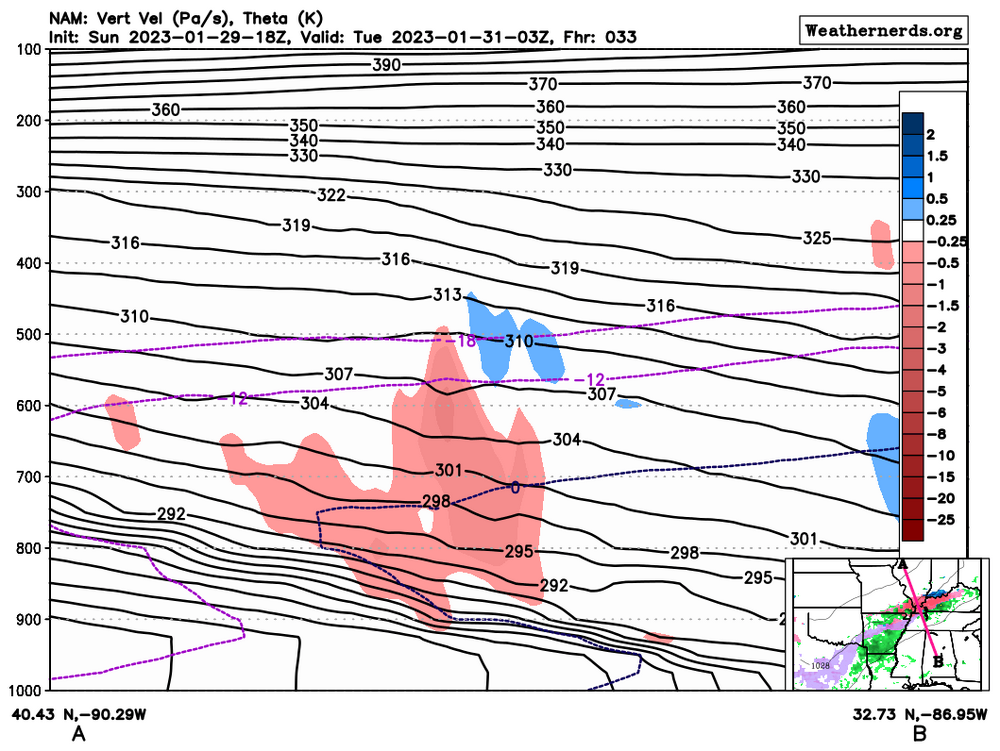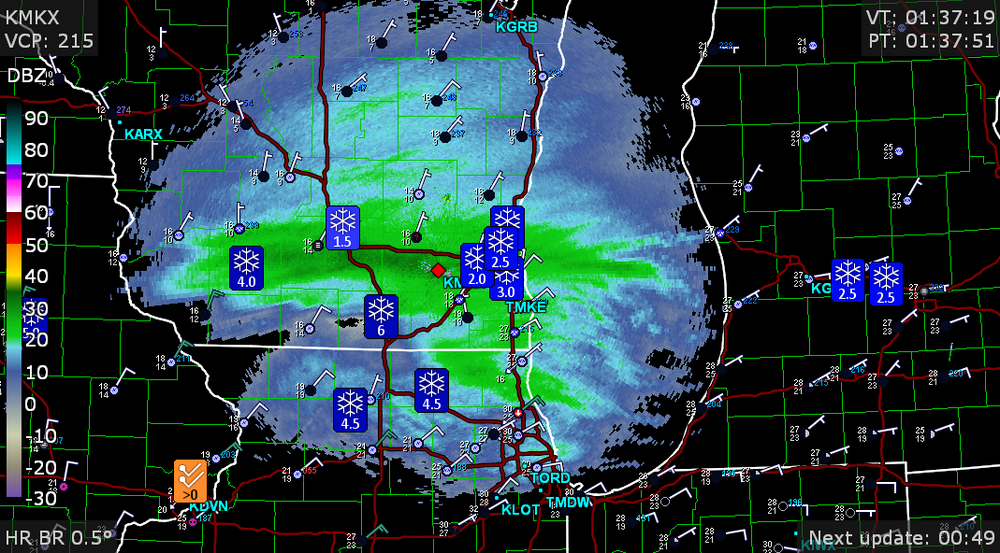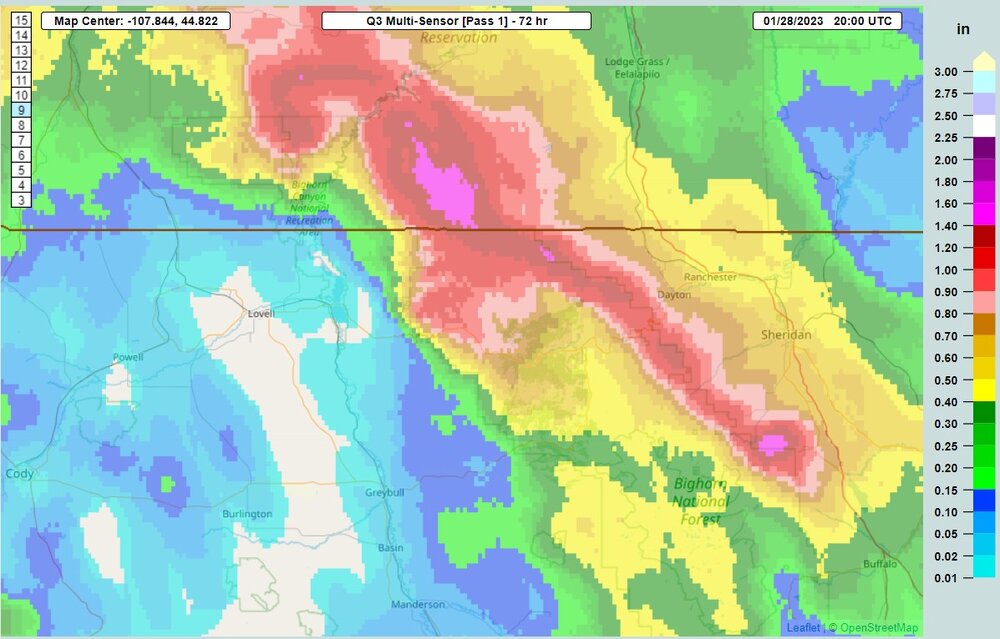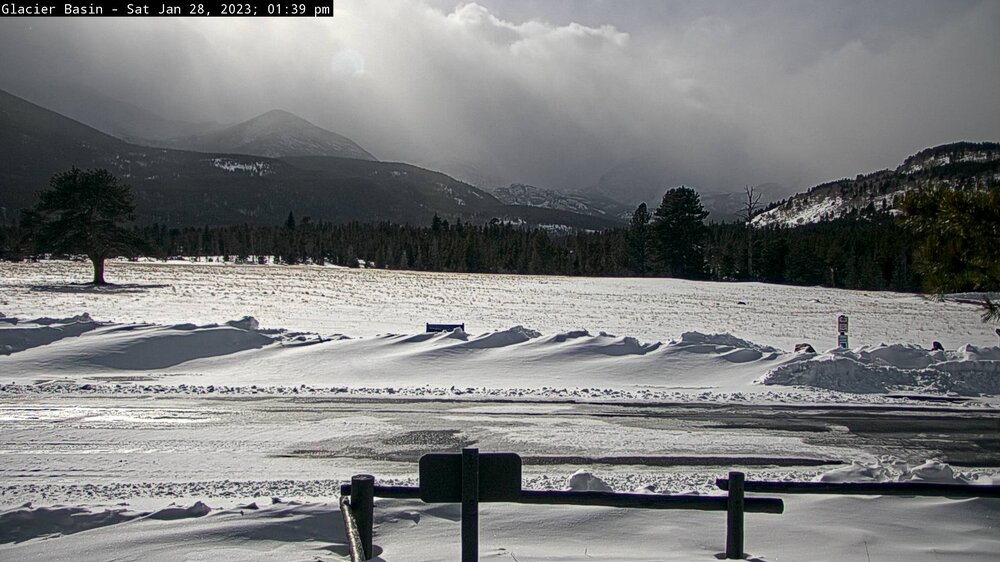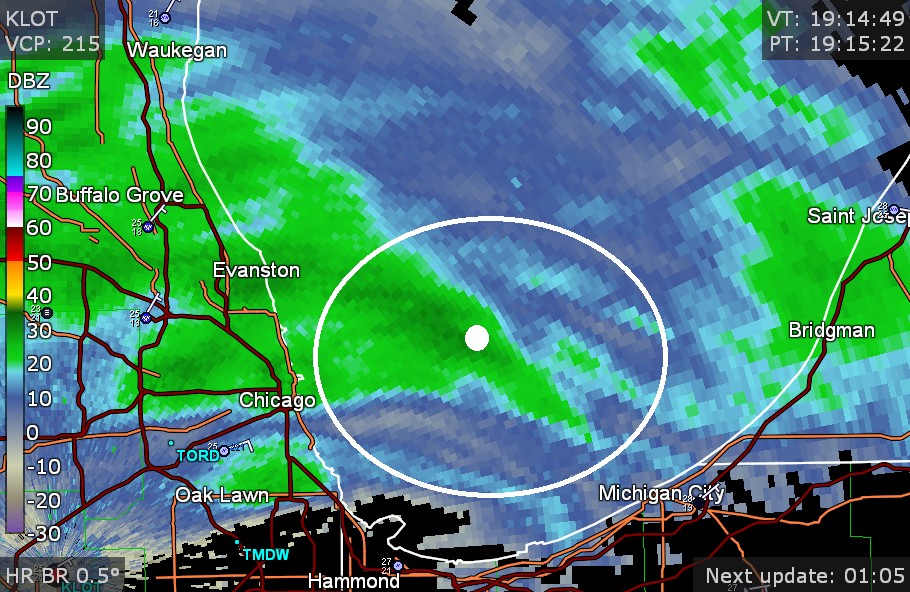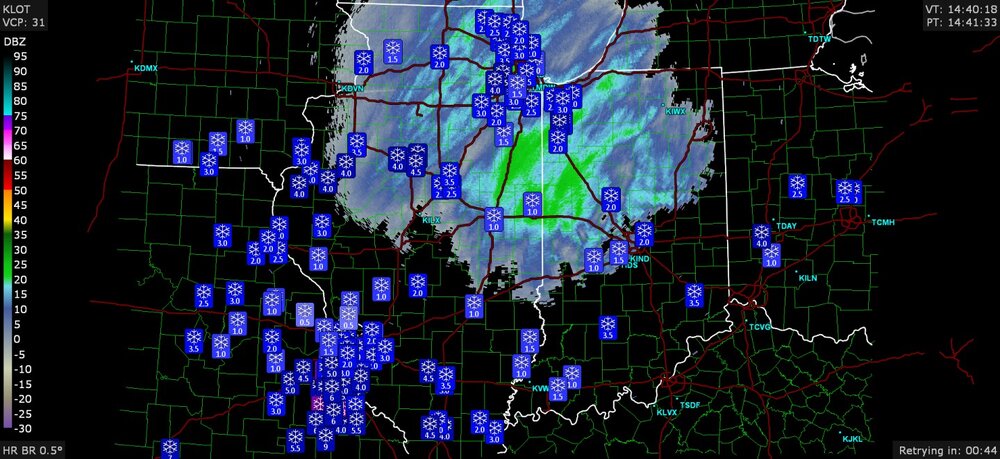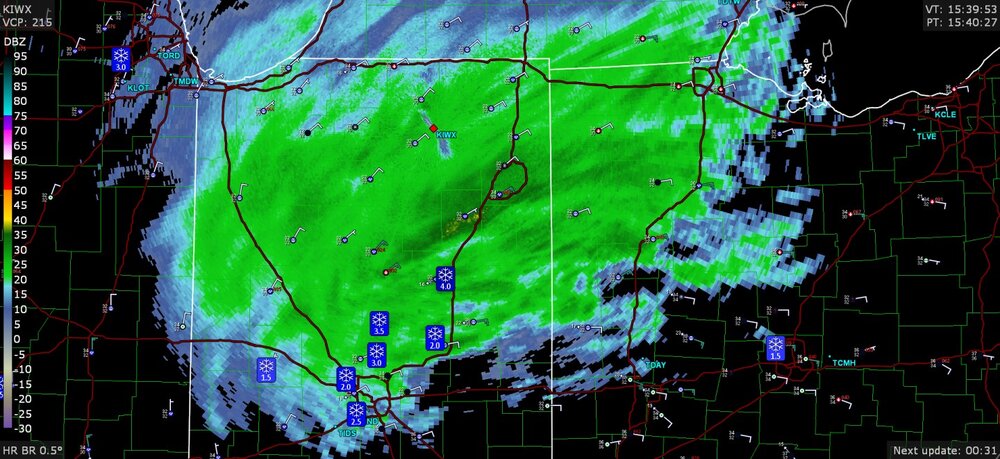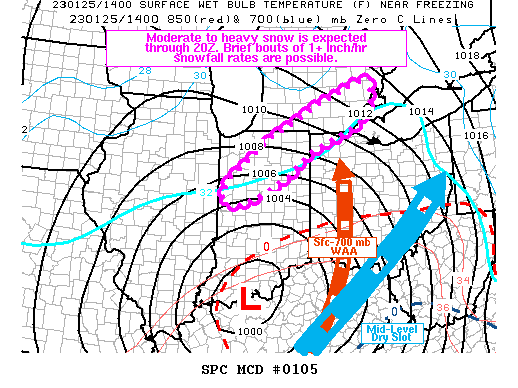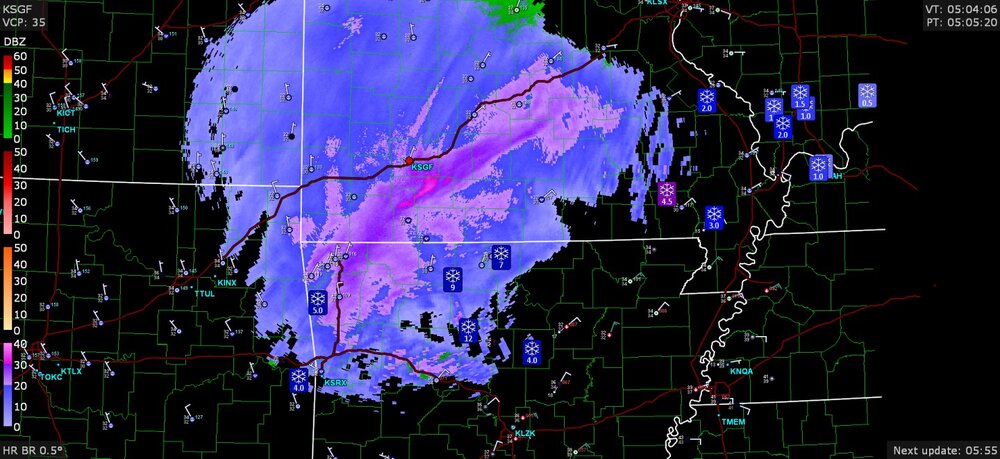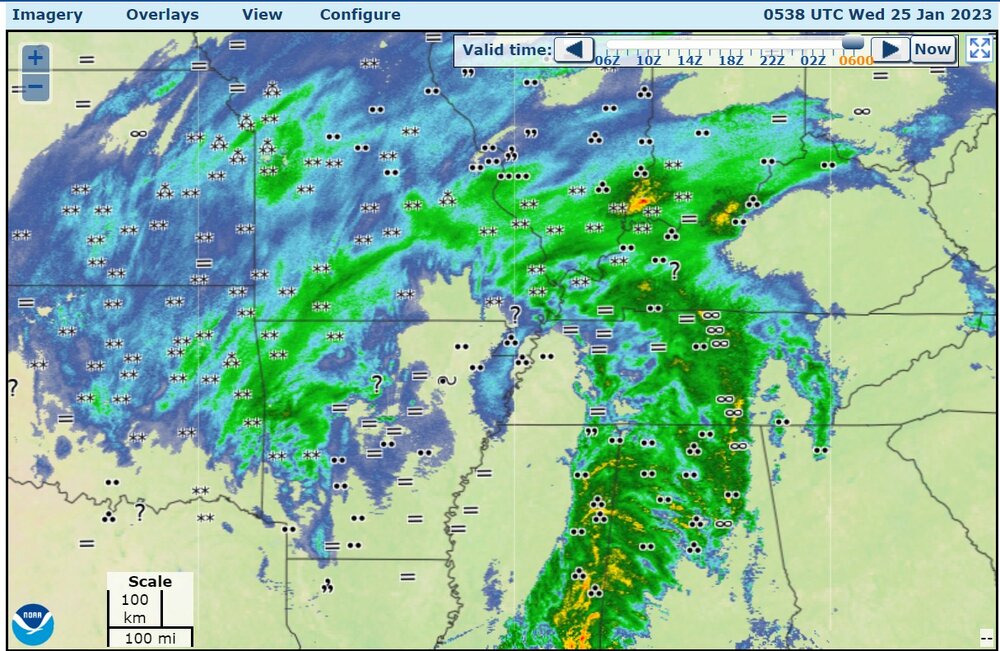-
Posts
10,550 -
Joined
-
Last visited
Content Type
Profiles
Blogs
Forums
American Weather
Media Demo
Store
Gallery
Everything posted by Chinook
-
-
Anybody from Toronto in here? The GFS says -14F (-26C) with a wind of 10 knots (19 km/h) on Friday morning. The NAM has some temperatures that are not quite so cold.
-

Texas/Oklahoma Discussion & Obs Thread 2022
Chinook replied to It's Always Sunny's topic in Central/Western States
Fort Worth had 0.30" reported freezing rain. Other note: thunder recently reported at the Dallas area and also Poteau, OK (temps below freezing on both) -
1.4" of sleet at Bentonville is an impressive storm report tonight when you've got 4 precip-type colors on radar
-
my place got about 1/2" (surprise!)
-
NAM-12km has sleet/freezing rain at 33 hrs, with this cross section showing the warm and cold layers that could cause this (see radar in the corner)
-
The bigger storms for Toledo that year
-
The recent storm on Wednesday reminded me of this event in terms of low pressure placement In other ways, the Dec 23-24 2022 was a lot more like 1/5/2014 in terms of true cold dumpage. As a general meteorological term, the polar vortex normally is in one or multiple 500mb lows in the far north, and contains the lowest 500mb heights and temperatures, and is also linked to the lowest 850mb temperatures of the Northern Hemisphere. Sometimes a distinguishable 500mb vortex can travel to mid Canada or lower Canada and dump the cold into the USA. In the case of 1/4/2014 to 1/8/2014, a very cold air mass, essentially a cut off polar vortex, converted its (maybe) -40C air at 500mb into a snowstorm and a dangerous wind chill scenario for the US and lower Canada. Some heavy snow came through Toledo, and I wasn't there for it, of course. But hey, I still have at least one picture from my parents. Pretty much everybody on this discussion board felt low wind chills on those days. As you can see from the observations, the low pressure went just south of Toledo.Thhere was 12.5" measured in NW Ohio, with winds of 15kt to 20kt in NW Ohio and northern Indiana. There were -40F to -46F wind chills at Toledo on the January 6th-7th. I believe there was a near record-breaking -30C temperatures at 850mb measured at Detroit DTX while there was decent wind. Some areas of the Midwest had -59F wind chills according to one of the maps below. my 500mb loop http://www.greatlakes.salsite.com/Jan_5_2014_storm_loop.html forecast: 232 Kelvin is -41 celsius
-
-
-
-
There's a winter storm warning for several counties in Michigan now.
-
-

Winter 2022/23 Short/Medium Range Discussion
Chinook replied to Chicago Storm's topic in Lakes/Ohio Valley
Got some decent size snowflakes and wet streets from 5:00-5:30 -

Winter 2022/23 Short/Medium Range Discussion
Chinook replied to Chicago Storm's topic in Lakes/Ohio Valley
anybody getting snow on the streets in N Indiana right now? -
I got 4.0 to 4.5" with pretty high density snow, with less than 4.0" snow depth on pavement, for sure. I think Toledo Express Airport has gotten 0.55" of water equivalent, so that could have normally been 5.5" to 6.0" on grass. It does look like 6.0" at Napoleon or Defiance with also over 6" towards Ann Arbor. I wonder what the COCORAHS spotters will see for their water equivalent of snow for the 2-day period. My area certainly could be 0.55" like Toledo Express Airport.
-

Midwest/Ohio Valley/Great Lakes Snow January 24-26
Chinook replied to Baum's topic in Lakes/Ohio Valley
wow, 7.8" at Ann Arbor spotter report -

Midwest/Ohio Valley/Great Lakes Snow January 24-26
Chinook replied to Baum's topic in Lakes/Ohio Valley
The radar is sort of maxing out at Fort Wayne -

Midwest/Ohio Valley/Great Lakes Snow January 24-26
Chinook replied to Baum's topic in Lakes/Ohio Valley
-

Midwest/Ohio Valley/Great Lakes Snow January 24-26
Chinook replied to Baum's topic in Lakes/Ohio Valley
I just as I posted the SPC mesoscale discussion graphic, and now... the big snowflakes are here. There are aggregate snowflakes or whatever the term is, snowflakes sticking to snowflakes. It's going to be accumulating 1" per hour for a couple of hours at least. -

Midwest/Ohio Valley/Great Lakes Snow January 24-26
Chinook replied to Baum's topic in Lakes/Ohio Valley
At my place, snow is covering the grass, mainly. Below: this SPC mesoscale discussion for snow is probably the only time I'm going to get a mesoscale discussion at my location for quite some time. -
-

Midwest/Ohio Valley/Great Lakes Snow January 24-26
Chinook replied to Baum's topic in Lakes/Ohio Valley
This is my favorite post ever. -
-
when have they not been in D2-D3 drought?



